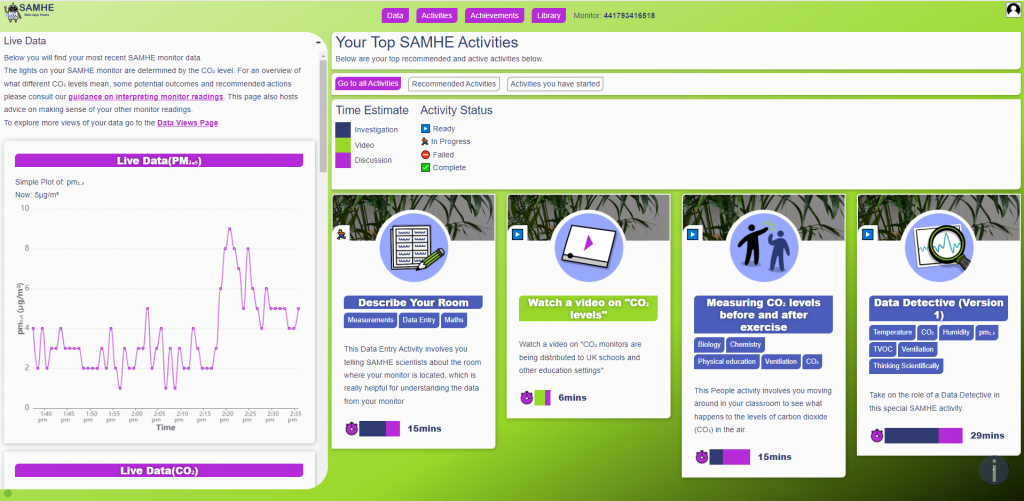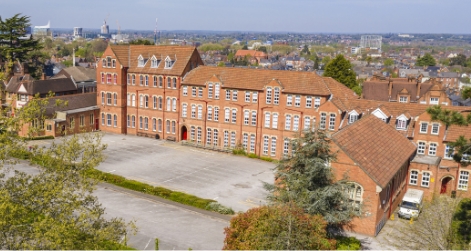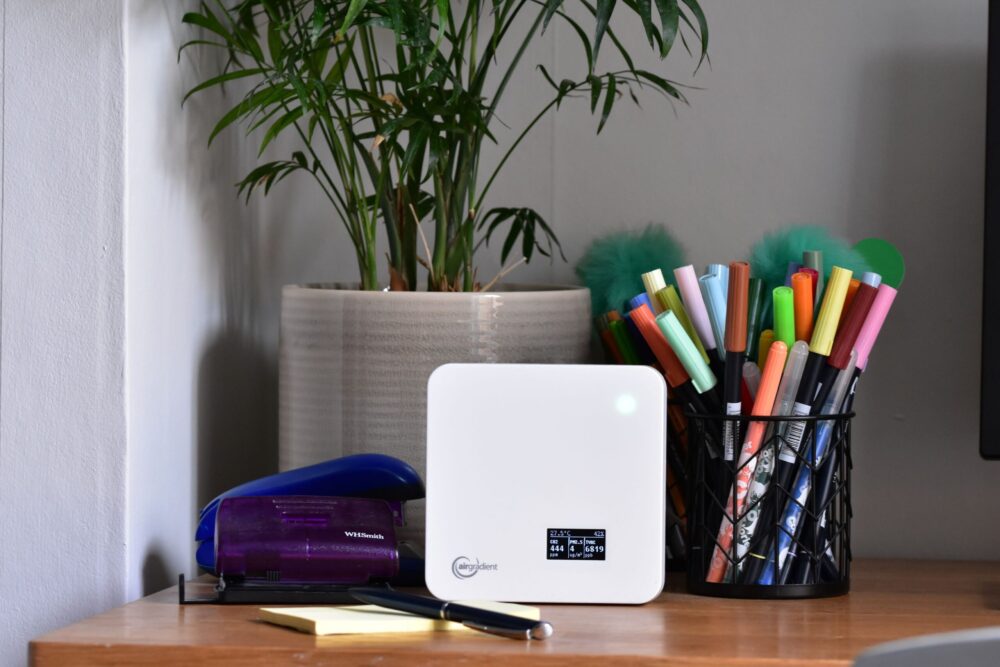Teachers and pupils at St Joseph’s College have helped scientists design and test an exciting new research project. SAMHE (pronounced ‘Sammy’) stands for Schools’ Air quality Monitoring for Health and Education. It offers schools a free air quality monitor linked to an interactive Web App, enabling staff and students to view and investigate data on their classroom air quality. Schools receive a free high-spec air quality monitor that measures carbon dioxide (CO2), total volatile organic compounds (TVOCs), particulate matter (PM), temperature and relative humidity.
Through the SAMHE Web App, teachers and pupils can view the data in a range of interactive chart and graph formats and see how air quality changes over the course of hours, days or weeks and months. The App also offers a range of curriculum-linked activities and experiments using the data, creating opportunities for pupils to be scientists and do hands-on experiments with their monitor. Poor air quality impacts pupils’ health and attention levels, so it is important it is monitored and understood.

St Joseph’s is one of 120 Pioneer Schools which helped test and refine a beta version of the Web App. This involved us installing the monitoring equipment in school, working with the University of York and the SAMHE team to refine the web interface, gaining feedback from staff and students on functionality of the Web App and testing a range of activities to investigate air quality in school.
Dr Steven West, SAMHE lead teacher at St Joseph’s commented: “Being involved with the project from an early stage has allowed us to see how the vital research into air quality in schools is carried out and work with academics and researchers to refine the systems in advance of today’s release date. In Geography Club we are looking forward to getting more involved with the activities provided within the Web App and seeing how the project develops.”
As well as being available to the school, air quality data from the monitor is collated in a national database and made available to scientists. Six research organisations are collaborating to deliver the project, with funding from the Engineering and Physical Sciences Research Council and support from the Department for Education.
The SAMHE team hopes to recruit over 1500 schools covering the full range of school types, sizes, locations and building styles. This will provide sufficient data to understand schools’ air quality across the UK.
Dr Henry Burridge, project lead for SAMHE at Imperial College London, added: “Our overall aim is to understand and improve long-term air quality for all schools and provide evidence for better national policies and practice.”











